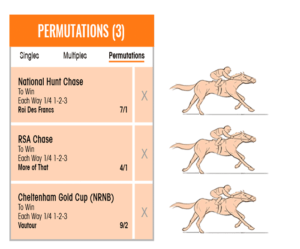Which is the oldest of the ‘championship’ races run at the Cheltenham Festival?
The ‘championship’ or ‘feature’ races run at the Cheltenham Festival are, of course, the Champion Hurdle, Queen Mother Champion Chase, Stayers’ Hurdle and Cheltenham Gold Cup. The Cheltenham Gold Cup, inaugurated in 1924, and the Champion Hurdle, inaugurated in 1927, were both introduced on the direction of Clerk of the Course Frederick Cathcart, who probably did more than anyone else to raise the profile of the Cheltenham Festival.
The original incarnation of the Stayers’ Hurdle, known as the ‘Stayers’ Selling Hurdle’, was first run at the Cheltenham Festival in 1912, but the race took on a more recognisable form as the ‘Spa Hurdle’ – not to be confused with the Spa Novices’ Hurdle, a.k.a. the Albert Bartlett Novices’ Hurdle – in 1946. In 1972, the Spa Hurdle was renamed the Stayers’ Hurdle and, apart from an 11-year period when it was renamed the ‘World Hurdle’, has been known by that title ever since.
The two-mile steeplechasing championship, the Queen Mother Champion Chase, was inaugurated in 1959, when it was known simply as the ‘National Hunt Two-Mile Champion Chase’. However, in 1980, the race was renamed to celebrate the eightieth birthday of Queen Elizabeth The Queen Mother, who was a lifelong supporter of National Hunt racing, particularly steeplechasing.
 Not to be confused with a ‘Round Robin’ tournament, in which each participant plays every other participant, a ‘Round Robin’ bet is a multiple bet, which combines three selections in ten individual bets. Those individual bets are three doubles, one treble and three ‘single-stakes-about’ bets, each of which is actually a pair of bets. The doubles and treble are straightforward enough, but the single-stakes-about bets can be a source of confusion for anyone unfamiliar with ‘any-to-come’ or ‘if-cash’ betting.
Not to be confused with a ‘Round Robin’ tournament, in which each participant plays every other participant, a ‘Round Robin’ bet is a multiple bet, which combines three selections in ten individual bets. Those individual bets are three doubles, one treble and three ‘single-stakes-about’ bets, each of which is actually a pair of bets. The doubles and treble are straightforward enough, but the single-stakes-about bets can be a source of confusion for anyone unfamiliar with ‘any-to-come’ or ‘if-cash’ betting.